ARTWORKS
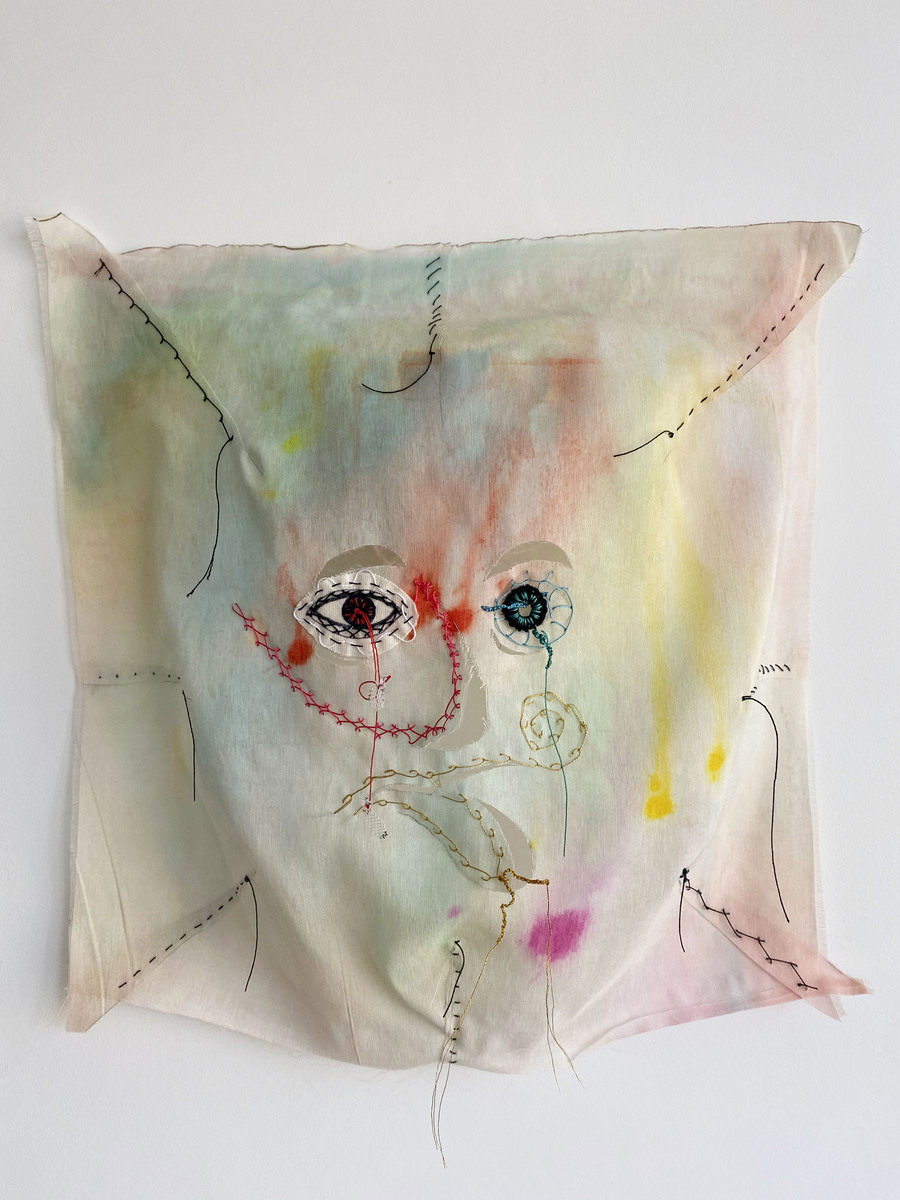
The Sinistry
Exploring the Interplay Between Religion and Human Consciousness in Tito Stanley’s Landscape Paintings
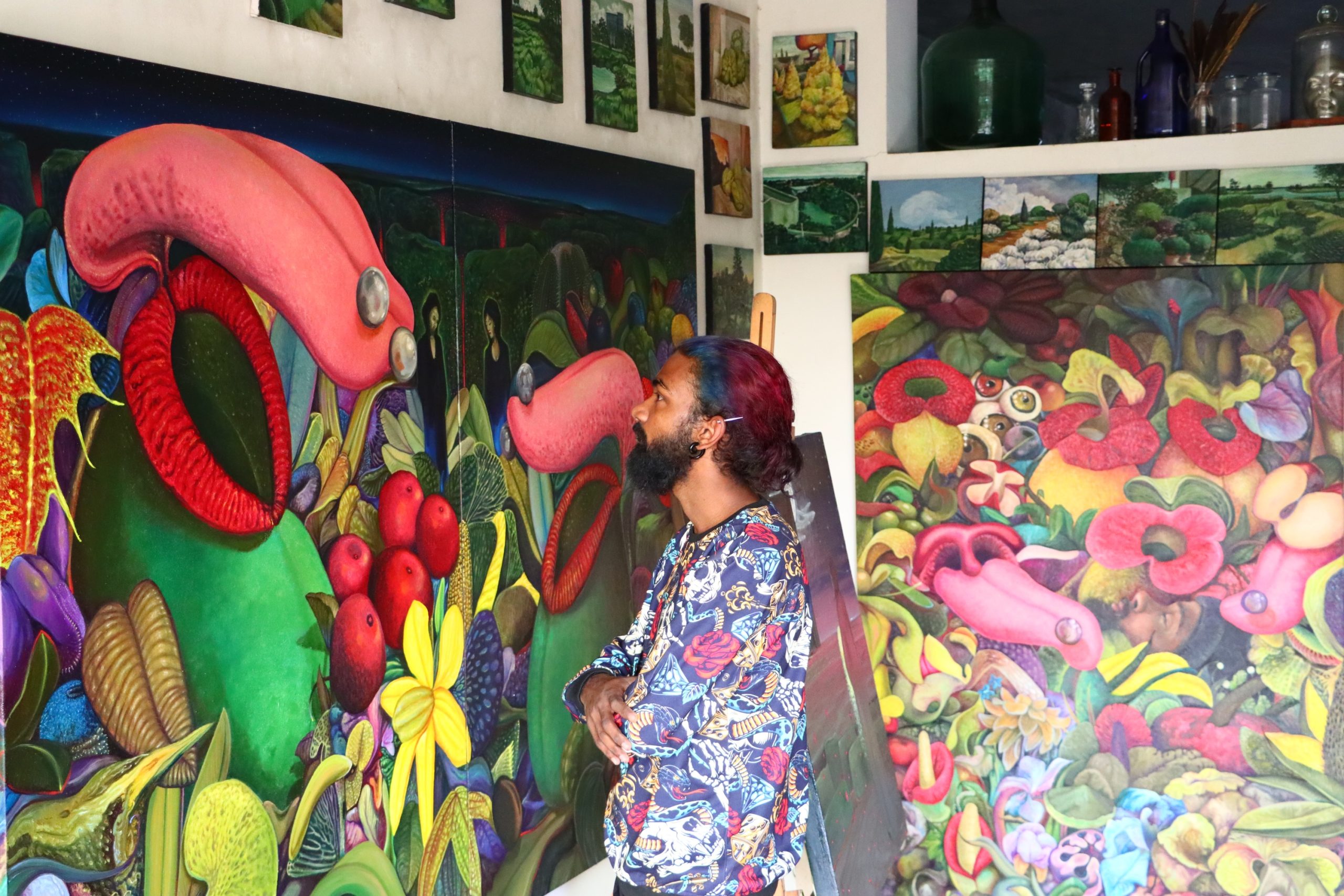
Born in Abu Dhabi in 1994, Tito Stanley moved to his parents’ homeland of Kerala and spent his formative years there. The disparity in climate and culture between his birthplace and India initially prompted a sense of displacement, but Stanley adapted to his new surroundings. He grew up immersed in two distinct landscapes and societies, both characterised by a pervasive religious influence – Islam in Abu Dhabi, Hinduism and Christianity in Kerala. This dual perspective later found expression in his artistic endeavours, as he painted landscapes and human figures influenced by the juxtaposition of these two environments.
Stanley’s creative journey began quite late, and he is still puzzled as to how it came about: “I never thought I’d become an artist. It happened almost accidentally, I’m still not entirely sure how. It remains a mystery to me.”
His introduction to the world of art began by chance, during his studies at the Industrial Training Institute in Kerala. The student union, under the control of the state’s long-standing Communist party, undertook charity work in the region. Stanley joined them and found himself creating political murals for the state elections. While he initially didn’t view this as art, the experience proved invaluable. Working on large-scale paintings not only taught him about wall surfaces and dimensions, but laid the foundation for his future endeavours.
However, he was also exposed to political violence, including the assassination of a close friend, a traumatic experience that deeply affected him and his artistic path. It led him to question his sense of belonging within the cultural contexts in which he had grown up, prompting a search for identity on a wider scale. At his friend’s funeral, Stanley met an art student who introduced him to the concept of formal art education. He decided to enrol in a fine arts college in Thiruvananthapuram.

During his first year, which focused predominantly on landscapes, still lifes and live studies, Stanley grew disenchanted. The repetitive nature of these exercises resulted in a monotonous array of similar images on every student’s canvas. Feeling stifled, Stanley temporarily abandoned formal practice and started making spontaneous sketches inspired by local landscapes or views glimpsed from train journeys.
The death of his friend had left an indelible mark on him, manifesting as disorganised but persistent memories that demanded artistic expression. Painting became Stanley’s solace and a gateway to personal liberation as his canvas became a vessel for expressing grief.
Through his artistic journey, Stanley realised that human behaviour is profoundly shaped by the forces of religion, rituals and environmental experiences, both positive and negative. This insight prompted a series of self-portraits and paintings of imagined figures, all grappling with the need to conform to the religious, moral and ethical dictates of their respective societies.
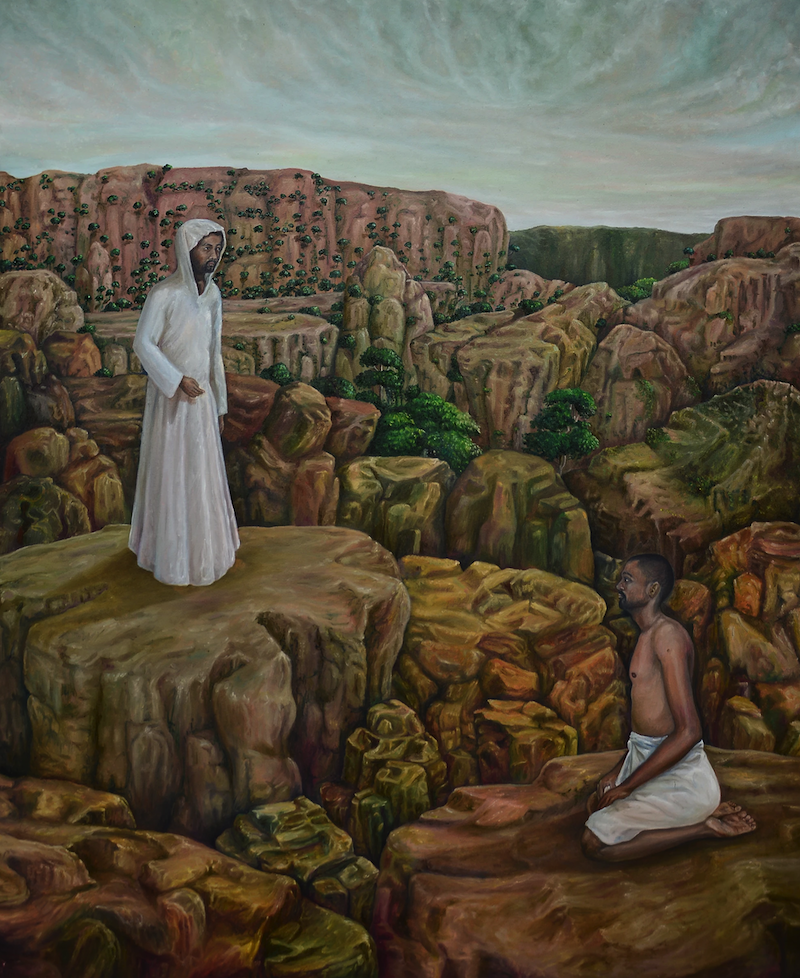
This phase of Stanley’s artistic evolution saw the introduction of biblical and surreal imagery to convey the inner turmoil and conflict associated with having to adhere to beliefs one does not genuinely hold. For instance, he employed halos to symbolise ordinary individuals masquerading as divine figures, while hybrid creatures served as metaphors for the pervasive influence of religion on people’s lives.
Some of the symbols come from childhood influences. Take falling stars, for example. He explains: “My grandma used to tell me stories about people turning into stars after they die. I started exploring that, and whether these people have been able to fulfil their dreams. I thought that many did not and that’s why they fall back.”
The traditional understanding of religion that was embedded in him from a very young age – Stanley was brought up as a Christian – stopped being a source of support and eternal truth. He started looking for other meanings of faith, relying on himself and his own beliefs rather than what had been instilled in him by others.
His recent artworks delve into the impact of religion on human consciousness. Most depict expansive landscapes of various kinds, but always include references to the Christianity of his upbringing. Churches and temples often demand monetary contributions from their followers, so he explores the economic aspect too. His works illuminate how those who impart moral teachings can exploit religion for financial gain, fostering environments of fear and apprehension. Stanley also probes concepts of heaven and hell, exemplifying the confusion within his own psyche.
Human figures are often absent from his painting; he relies instead on other visual symbols to represent his inner landscape. One such work portrays a staircase leading to another world, surrounded by empty churches and desolate vistas. This piece includes a memorial to his assassinated friend, both a tribute and a stark reminder of the violence that can be perpetrated in the name of religion and politics.
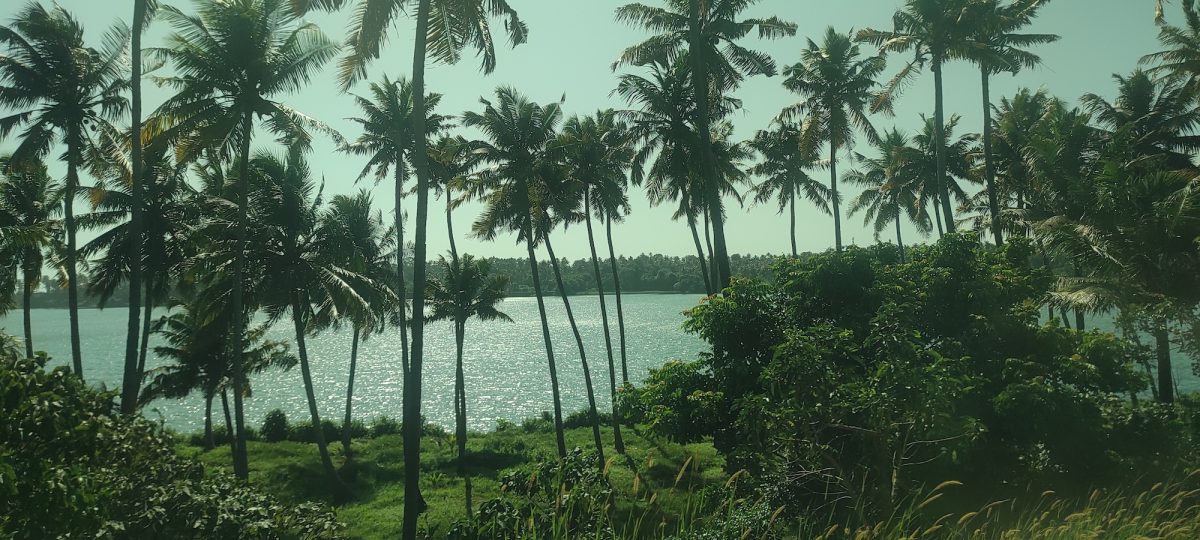
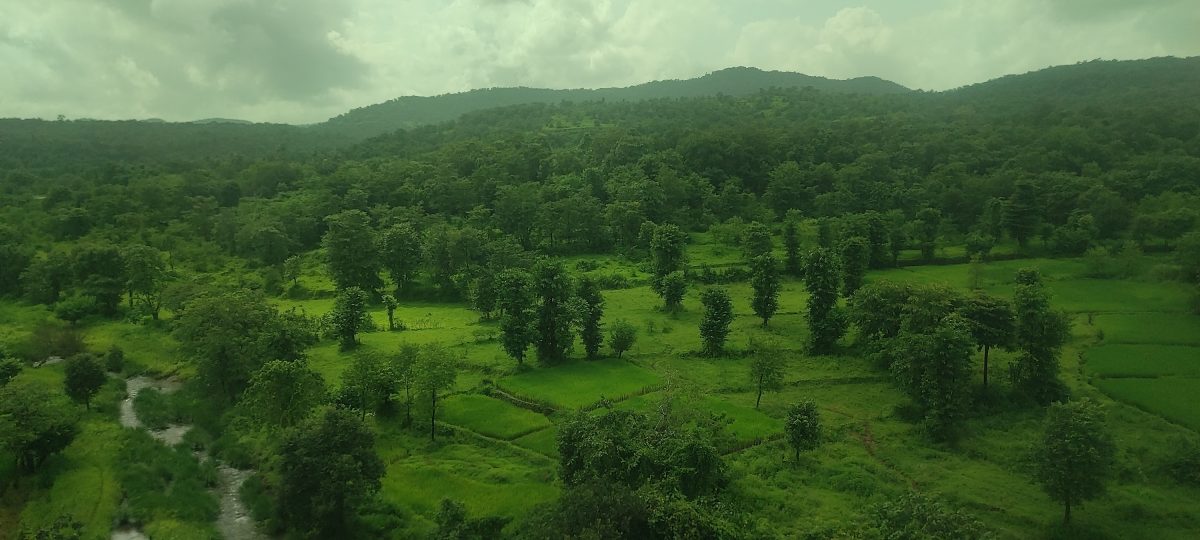
Stanley’s travels also play a key role. He highlights the difference in landscape between southern and northern India and his fascination when travelling between the two:
“When I took a train between Kerala and Baroda [in Gujarat], I would look at the landscape, never photographing it, but memorising its details, subtle changes and the colours, to paint later from memory. That feels more real to me than taking a picture.”
Stanley’s ability to remember places and paint them from his own perspective, without relying on photographs, underscores the profound impact of geographic locations on his creative process. Keralan churches are a major symbolic element in his art. They may not be precise replicas of actual churches, but they capture their essence in a manner that aligns with his personal vision.
Stanley’s artistic influences extend beyond southern India, incorporating elements from many places, including Shantiniketan in West Bengal, Sirohi in Rajasthan and Hampi in Karnataka – all important cultural sites. His works often highlight distinct characteristics and major differences between those regions that relate to colours, make-up of the landscape and even people’s attitudes. Stanley is currently based in Baroda in Gujrat, but his heart remains in Kerala.